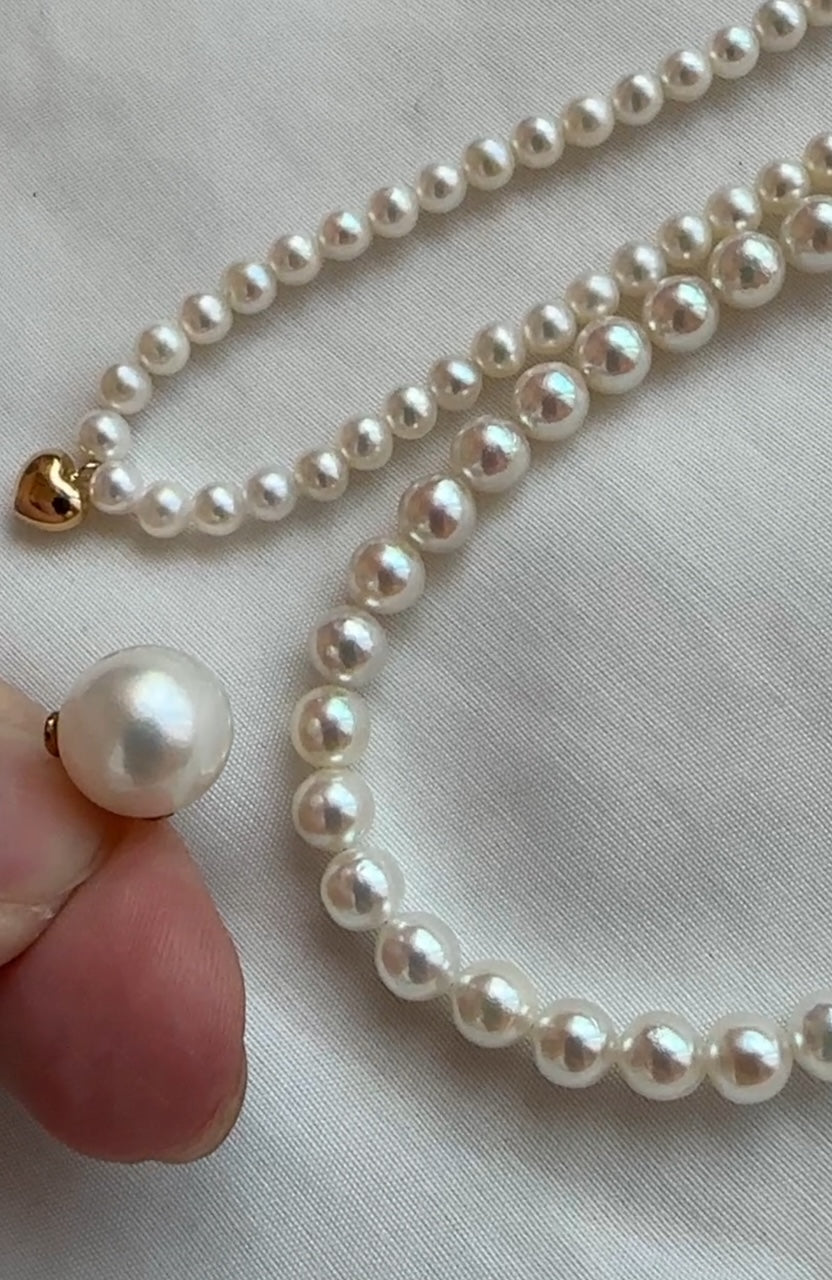Exploring the Grades and Value of Akoya Pearls - From Hanadama to Matama
Akoya pearls are one of the most cherished varieties at Lively Co. Their radiant mirror-like luster brings a stunning elegance to our creations, especially those crafted from the high-quality Akoya pearls we source from our trusted Japanese partners. Named after the Akoya oyster (Pinctada fucata), these pearls are renowned for their beauty and quality. In this article, we will delve into the grading system of Akoya pearls, exploring how factors such as color, luster, nacre thickness, and other key elements contribute to their value.
1. Grading and Certification of Akoya Pearls
In the Japanese market, Akoya pearls are meticulously graded based on luster, color, shape, surface imperfections, and nacre thickness. Below are the special titles and grades from certificates established by the Pearl Science Laboratory in Japan:
-
Hanadama: Hanadama pearls are a high-grade classification within the Akoya pearl grading system. These pearls boast exceptionally strong luster, near-perfect shape, minimal imperfections, and a nacre thickness exceeding 0.4mm. They are considered top-quality in the market.
-
Tenyo: Tenyo pearls represent a subset of Hanadama pearls and are distinguished by their extremely high luster, perfect shape, and the presence of the "aurora effect" (three interference colors) under specialized instruments. These pearls are highly sought after by collectors.
-
Matama: Matama refers to the highest grade of silver-blue Akoya pearls. Only the top 3%-5% of silver-blue Akoya pearls receive this designation. Matama pearls exhibit a strong mirror-like luster and rich color variations, making them incredibly rare and luxurious.
2. Color and Luster of Akoya Pearls
Akoya pearls are predominantly found in white, silver-blue, and champagne hues, with white being the most common. Within each color category, interference colors like pink, green, and blue can further enhance the unique beauty of each pearl.
Color Treatment: Approximately 95% of Akoya pearls undergo color treatment, a standard process in Japan that removes organic pigments and impurities, enhancing the pearl’s overall appearance. Treated pearls typically have more uniform colors and are easier to match, increasing their market value. However, untreated Akoya pearls with naturally beautiful colors are exceedingly rare and command higher prices.
3. Luster and TERI of Akoya Pearls
Luster, or "TERI" in Japanese, is one of the most defining characteristics of Akoya pearls. The strength of the luster depends on the arrangement of calcium carbonate crystals in the pearl’s nacre. When light hits a well-arranged nacre, it reflects multiple times, creating a bright, luminous effect.
High-luster Akoya pearls can reflect light even in dim environments, earning them the nickname "small light bulbs." Pearls with strong luster often display noticeable interference colors, further enhancing their visual appeal.
4. Nacre Thickness and Maki
The thickness of the nacre, referred to as "Maki," is a crucial factor in grading Akoya pearls. Akoya pearls are composed of multiple layers of calcium carbonate crystals and conchiolin proteins. While thicker nacre generally indicates durability, the quality of the nacre arrangement is equally important for achieving a strong luster.
Pearls with a nacre thickness of 0.4mm or more are considered durable and are required for top-grade classifications like Hanadama and Tenyo.
5. Size and Value of Akoya Pearls
While size does not directly influence the quality of Akoya pearls, it is an important factor in determining their rarity and price. Akoya pearls typically range from 2mm to 10mm in size. Baby Akoya pearls refer to smaller Akoya pearls, usually under 5mm, which have gained popularity for their delicate and refined appearance.
Larger Akoya pearls over 8mm are rarer, making them more valuable. Similarly, Baby Akoya pearls under 5mm are also sought after for their exquisite size and unique charm.
6. The Precious Value of Akoya Pearls
The value of Akoya pearls stems from their rarity and high quality. Each Akoya pearl takes 3-4 years to develop, and each oyster produces only one pearl. This slow production rate, combined with the pearls' luster, small size, and strict grading, makes Akoya pearls highly valuable in the market.

